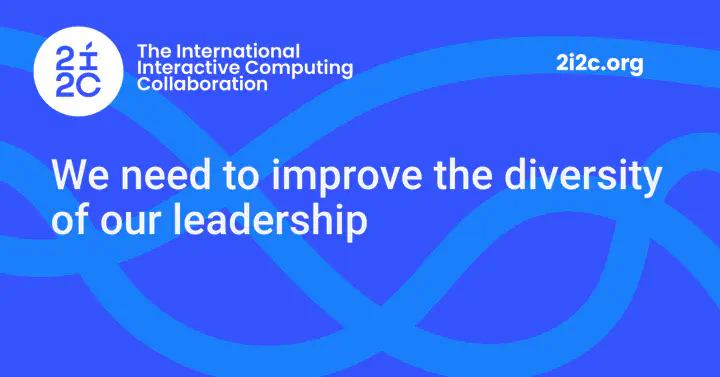We need to improve the diversity of our leadership

As an organization committed to broadening access to interactive computing for global communities, we believe that a team embedded with diverse insights and lived experiences can more effectively advocate for underrepresented voices in our socio-technical partnerships. A diversity of team experiences helps us deliver a service that broadens and empowers participation in open-source science for all communities and leads to more effective teams that make better decisions .
As a young and growing organization, we have had mixed success in building diversity within our team. We’ve leaned into the values of our service that build trust and attract a broad coalition of community partners (and potential employees). For example, we’ve used the following pillars in describing our service:
- Transparency – our transparent and participatory model keeps our incentives aligned with community needs.
- Empowerment – our service gives communities agency to design the service they need, and to manage it without 2i2c if they wish.
- Partnership – our communities are partners working towards shared impact, not customers to grow revenue.
- Sustainability – our service should have a self-sustaining model that ensures continuity, growth, and funder independence.
We’ve also invested in creating an inclusive organizational culture via documents like our Team Compass and our Code of Conduct 1. We’ve experimented with inclusive hiring practices to encourage a diverse pool of applicants for our open positions, such as running open office hours for job postings in the hopes that this would encourage more people to apply who might otherwise have been hesitant (something that often correlates with people from historically marginalized communities).
The importance of diverse leadership #
However, over the past few months, we have reflected on our organization’s structure and future plans. In particular, we recognize that there is a worrying lack of women in staff leadership roles. This imbalance does not live up to our values of diversity in our team and service.
We need to do better.
2i2c is at a moment of maturation and growth as an organization, kicked off by our organizational audit from 2023 as well as our three-year retrospective . We believe that improving the diversity of leadership throughout the organization is a necessary part of that maturation over the next three years.
Below are a few ideas for how we aim to make improvements, and we invite feedback from others who are interested in helping us improve this aspect of our organization.
What we plan to do #
Over the next few months, we will work on a long-term DEI strategy in tandem with our sustainability strategy as we work towards scalable and sustainable networks of community hubs .
Here are some steps we aim to take to improve the diversity of our leadership across the organization:
- Define our goals for diversity. First, we need a better understanding of the most important axes of diversity that we wish to design around. Gender is clearly a critical gap to cover, but there are many other important axes of diversity as well. For example, as an organization that serves a global community, it is important that we have global perspectives represented in our leadership.
- Define mechanisms for leadership and governance that includes representation along these axes. Leadership at a staff level is one way to ensure representation of diverse perspectives, but there are many other ways to bring voices into the conversation. We aim to explore new ways of bringing diverse voices into the strategic direction of the organization and provide mechanisms for holding us accountable to our values. For example, we intend to grow a board to guide 2i2c’s strategy and hold its Executive Director accountable for achieving impact - this is another opportunity to bring diverse perspectives into our leadership.
- Make a plan for improving leadership diversity within our team. Whatever mechanisms we create for diverse leadership, we know that one of them needs to be improving our diversity at a staff leadership level. Our staff are the ones that spend the most time working on - and have the most leverage over - our strategy and mission, and it’s important that our staff leadership is a good representation of the diverse perspectives of the communities we serve. This might mean investing more heavily in reaching broad applicant pools for new positions, seeking external consultation for how we can avoid unintentionally sending exclusionary signals to others in our communications and outreach and developing incentives to retain our talent over time.
- Continue improving our systems of delivery and work. Finally, we believe that a crucial aspect of improving the diversity in our organization is to continue transforming our systems for delivery, reliability, and accountability across the organization. This effort is a crucial step for fostering an inclusive and equitable culture. We have made a lot of progress in improving our delivery systems and will continue this improvement as an organization.
We hope that this post both makes transparent a distinct lack of diversity within our organizational leadership and provides clarity for some of our plans to improve. We are excited about the organization that we have built so far, as well as being fiercely proud of our open-source culture and development practises. We still know that we must do better, and we’re fully committed to doing so over the coming years.
We often refer to the Project Include documentation in creating an inclusive culture and set of policies. ↩︎